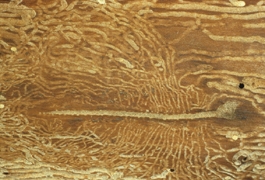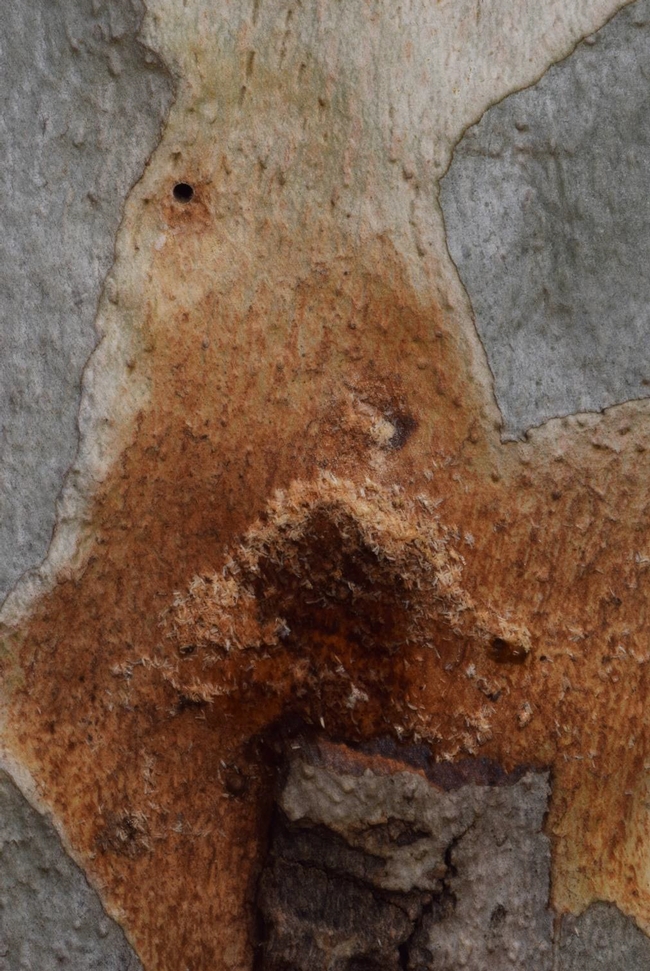This is the most recent activity summary of a group of organizations working on the Invasive Shot Hole Borers and their associated fungal symbionts. This pest/disease complex affects avocado along with a large number of native and landscape plants in California, as well as in other parts of the world (http://ucanr.edu/sites/pshb/; http://ucanr.edu/sites/pshb/files/238251.pdf):
Invasive Shot Hole Borers
Quarterly Situation Report
January through March 2018
Executive Summary
Overview
Education, outreach, and monitoring activities were robust during the cool damp winter months of 2018. Infestations continued to dominate Orange, San Diego, and Los Angeles counties, with lesser activity in Ventura and Santa Barbara counties. The need for funding of research, education, outreach, and waste management associated with ISHB was brought to the attention of state governance. Preventative efforts to increase awareness of ISHB in unaffected counties continued. Collaborative efforts of numerous agencies, educational institutions, and non-profit groups resulted in the successful efforts listed below.
Statewide
The two-day Invasive Species Summit was held in the State Capitol for legislators and their staff to learn about environmental pressures and costs created by these species statewide. Three pieces of proposed legislation were written either specific to or with components addressing ISHB. They are: AB 2054 (Gonzlez Fletcher), AB 2166 – California Farm Bill, AB 2470 (Grayson) – Invasive Species Council.
The Statewide SHB Network convened telephonically to discuss ISHB, spread, threat, and help educate those in unaffected counties. An ISHB presentation was given at a statewide horticultural convention in northern California.
The triennial California Native Plant Society Conservation Conference was held near Los Angeles International Airport. ISHB was addressed at a pre-conference invasive species workshop, throughout the conference by tabling and poster session, and during the Invasive Species Session.
Regional
UCCE San Diego helmed a two-part GSOB/ISHB-FD webinar, along with other UCCE and CALFIRE collaborators. The first installment streamed in March.
UCCE San Diego began work on an online ISHB survey assessment tool that will be accessible when completed on PSHB.org. This feature will help the public determine if tree symptoms may be due to an ISHB infestation. An added component will allow UCCE to monitor reporting. The decision tree that is part of the assessment takes the reporter to part of the site whereby photos can be submitted if the tool determines a probability of ISHB infestation. This tool will be completed, tested, reviewed, and posted to the website by summer 2018.
San Diego County
- Two ISHB public educational events were presented
- Buy It Where You Burn It campaign distributed literature countywide
Orange County
- Four ISHB public educational events were presented
- Numerous trap and monitoring sites are established throughout the county primarily in wildlands and parks
- Orange County Waste and Recycling learned 28% of all trees at Prima Deshecha Landfill in San Juan Capistrano are infested with ISHB/FD or Botryospaeria. Most of the vegetation at this site is comprised of native species
- A post-incident GSOB/ISHB reconnaissance was conducted in Weir Canyon, where the Canyon II Fire burned in autumn 2017
- Orange County Parks continued to track tree losses and costs associated with ISHB infestations on its properties. An economic report was publicly released
Los Angeles County
- Three ISHB public educational events were presented
- A funding request was submitted to County governance to continue the ISHB trapping program coordinated by the Resource Conservation District of the Santa Monica Mountains
- The Huntington continued monitoring and green waste processing at the 207-acre facility. An ISHB trapping trial by principal investigator at UC Riverside was initiated that utilizes castor wood as the attractant
Ventura County
- Twenty-six traps are established and monitored in the Santa Clara River watershed extending from the estuary to Piru
- Fifteen traps are established and monitored in the Ventura River watershed. This number is down by two after being lost during the Thomas Fire
- A new infestation was identified in the City of Santa Paula proximal to a known infestation in the Santa Clara River
- One ISHB educational event was presented to Master Gardeners
Santa Barbara County
- Seven traps are being monitored in Montecito and the City of Santa Barbara
- Three traps in Montecito were lost from the January debris flow disaster
- One ISHB educational event was presented to Master Gardeners
San Luis Obispo County
- One ISHB educational event was presented to Master Gardeners
Articles:
A. Raver. The tiny menace. Landscape Architecture Magazine. March 2018.
https://landscapearchitecturemagazine.org/2018/03/13/the-tiny-menace/
Images:
Shot Hole Borer galleries, cottonwood
Shot Hole Borer entry point, sycamore. Curtis Ewing, CAL FIRE
Attached Images:

